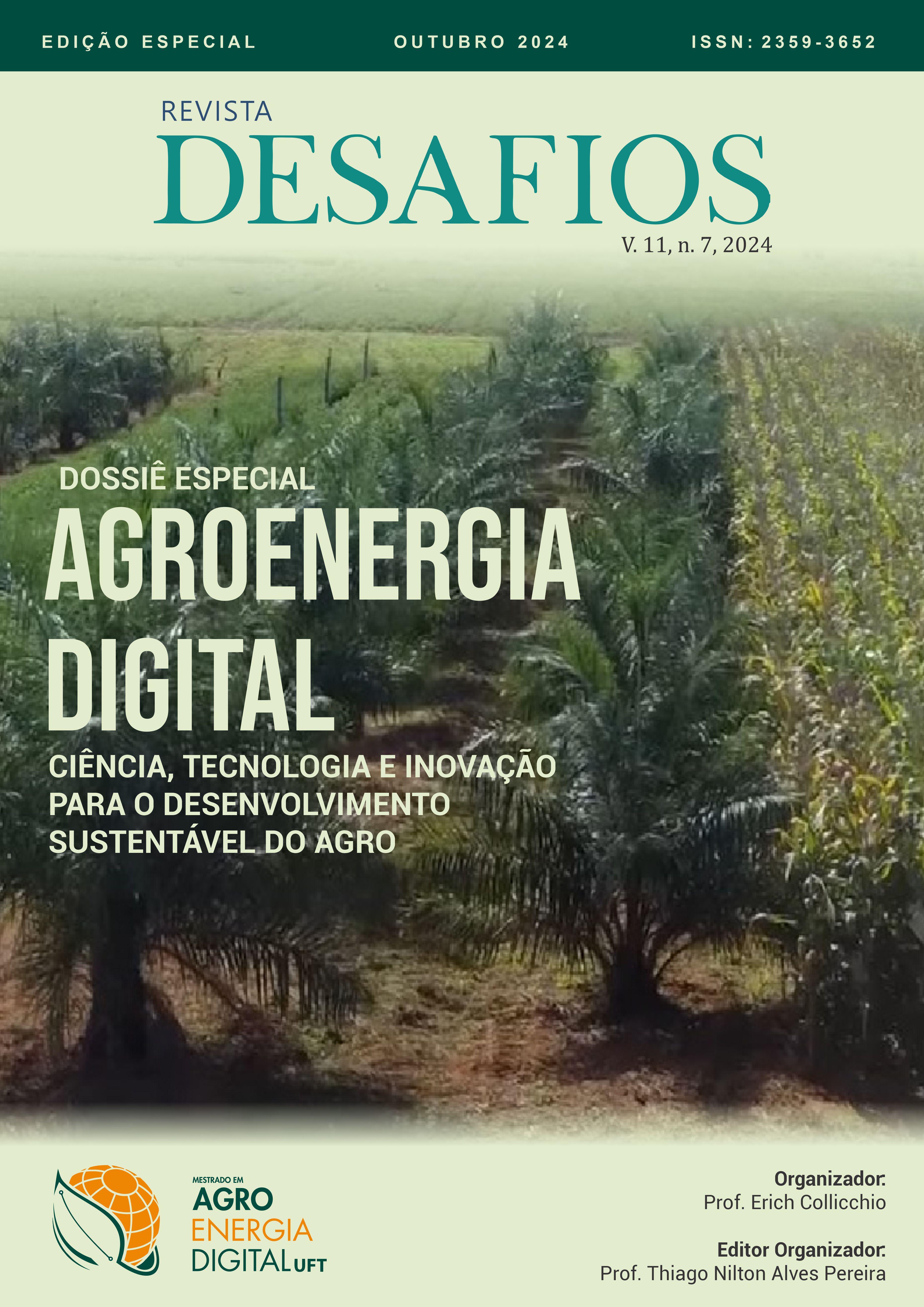CARACTERÍSTICA FÍSICO-QUÍMICA E SENSORIAL DO Coffea canephora Pierre ex Froehner SUBMETIDO À DIFERENTES MÉTODOS DE SECAGEM
DOI:
https://doi.org/10.20873/Agroenergia_2024_v11_n7_1Resumo
A qualidade do café conilon pode ser influenciada pelo manejo da cultura e processamento pós-colheita. Assim, objetivou-se com o trabalho avaliar a qualidade do café conilon despolpado e natural submetido aos métodos de secagem em secador híbrido solar elétrico (SHSE), terreiro de chão (TC) e terreiro suspenso (TS). Avaliou-se o teor de água, massa específica, pH, condutividade elétrica, acidez total titulável e sólidos solúveis totais e análise sensorial. A caracterização físico-química apresentou variações nos diferentes tipo de café (natural e despolpado) e no tempo de secagem (antes e depois). No entanto, a secagem no SHSE, TC e TS mantiveram características físico-químicas dos grãos de café desejáveis a comercialização para o consumidor final. Pelos resultados foi possível concluir que o SHSE pode ser uma alternativa aos sistemas de secagem convencional, principalmente pela redução do tempo de secagem.
Downloads
Publicado
Como Citar
Edição
Seção
Licença
Copyright (c) 2024 Madelon Rodrigues Sá Braz, Maria Eduarda Audizio Ribeiro, Juliana Lobo Paes, Beatriz Costalonga Vargas, Alexandre Porto Salmi, João Paulo Barreto Cunha, Neliane Marinho Queiroz Ornelas

Este trabalho está licenciado sob uma licença Creative Commons Attribution-NonCommercial 4.0 International License.
Autores que publicam nesta revista concordam com os seguintes termos:
1. Autores mantém os direitos autorais e concedem à revista o direito de primeira publicação, com o trabalho simultaneamente licenciado sob a Creative Commons Attribution License (CC BY-NC 4.0), permitindo o compartilhamento do trabalho com reconhecimento da autoria do trabalho e publicação inicial nesta revista.
2. Autores têm autorização para assumir contratos adicionais separadamente, para distribuição não-exclusiva da versão do trabalho publicada nesta revista (ex.: publicar em repositório institucional ou como capítulo de livro), com reconhecimento de autoria e publicação inicial nesta revista.
3. Autores têm permissão e são estimulados a publicar e distribuir seu trabalho online (ex.: em repositórios institucionais ou na sua página pessoal) a qualquer ponto posterior ao processo editorial.
4. Além disso, o AUTOR é informado e consente com a revista que, portanto, seu artigo pode ser incorporado pela DESAFIOS em bases e sistemas de informação científica existentes (indexadores e bancos de dados atuais) ou a existir no futuro (indexadores e bancos de dados futuros), nas condições definidas por este último em todos os momentos, que envolverá, pelo menos, a possibilidade de que os titulares desses bancos de dados possam executar as seguintes ações sobre o artigo:
a. Reproduzir, transmitir e distribuir o artigo, no todo ou em parte sob qualquer forma ou meio de transmissão eletrônica existente ou desenvolvida no futuro, incluindo a transmissão eletrônica para fins de pesquisa, visualização e impressão;
b. Reproduzir e distribuir, no todo ou em parte, o artigo na impressão.
c. Capacidade de traduzir certas partes do artigo.
d. Extrair figuras, tabelas, ilustrações e outros objetos gráficos e capturar metadados, legendas e artigo relacionado para fins de pesquisa, visualização e impressão.
e. Transmissão, distribuição e reprodução por agentes ou autorizada pelos proprietários de distribuidoras de bases de dados.
f. A preparação de citações bibliográficas, sumários e índices e referências de captura relacionados de partes selecionadas do artigo.
g. Digitalizar e / ou armazenar imagens e texto de artigo eletrônico.


